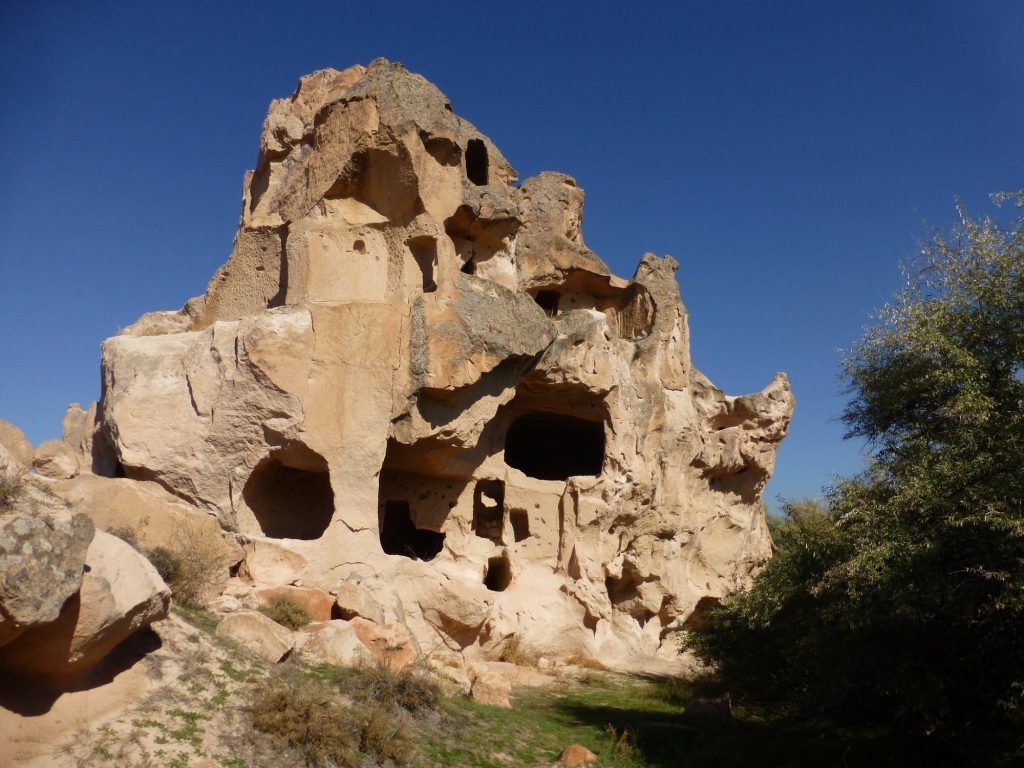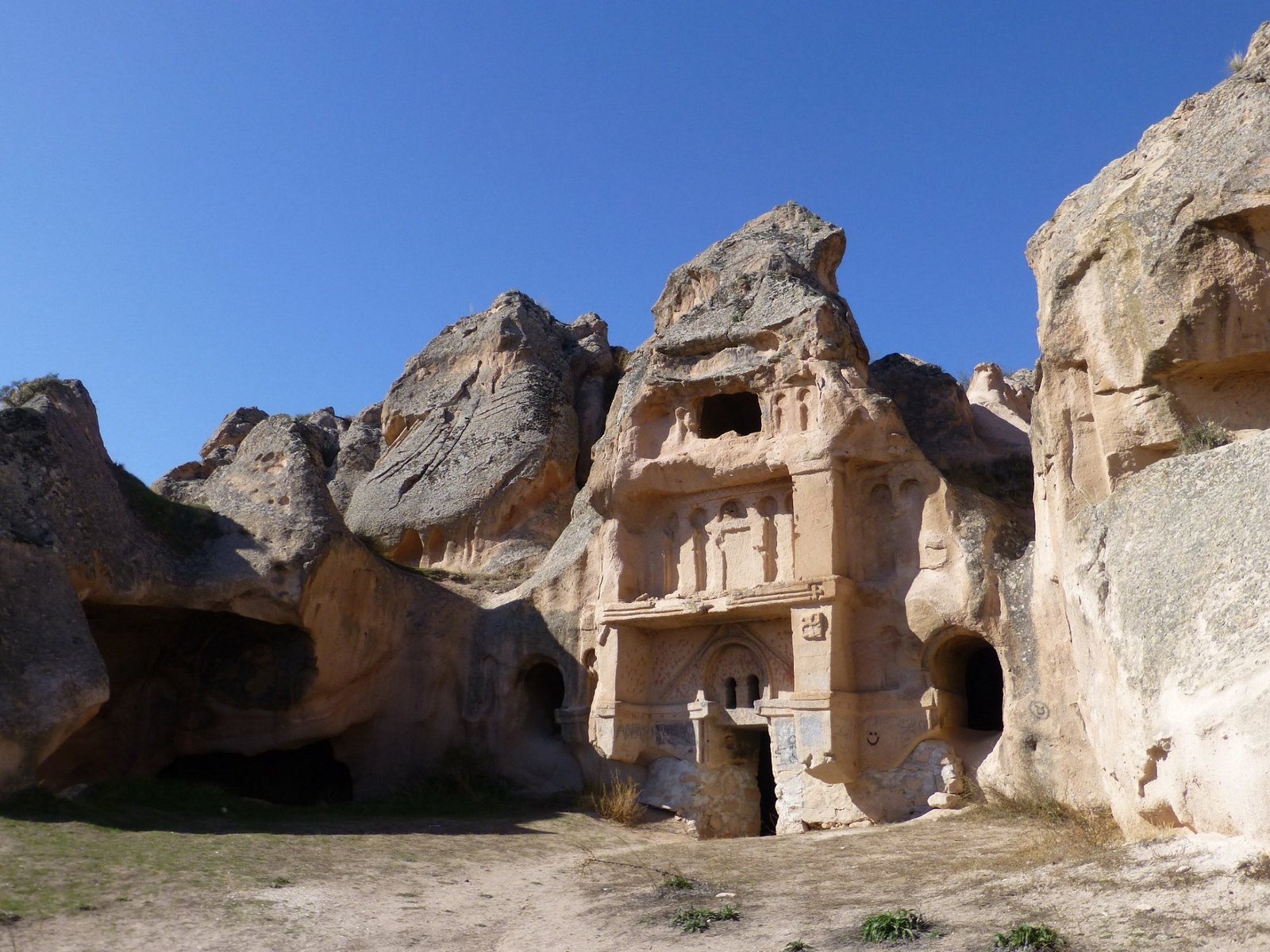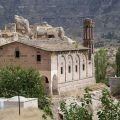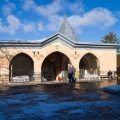Açık Saray is an incredible example of Byzantine-era rock-cut architecture, located about two kilometers east of Gülşehir in the Cappadocia region of Turkey. This open settlement is composed of nine courtyard complexes and fifteen cave churches, all carved into the soft volcanic tuff rock of the region. The site was developed around AD 1000 and is a testament to the skill and creativity of the carver-architects who built it.
The courtyard complexes at Açık Saray are the most prominent features of the site. These three-sided courtyards are similar in design and are decorated with elaborate façades featuring multiple levels of horseshoe niches. The architecture is monumental and projects status and power. Inside, most complexes follow a T-shaped pattern with two formal spaces – a horizontal vestibule behind the façade and a perpendicular main hall. Other side rooms are smaller and less decorated. The courtyards also have functional spaces, such as dovecotes, kitchens, and/or horse stables. The decorative style, especially the crosses, emphasizes the Christian origins of Açık Saray.

The settlement has fifteen churches, with three of them located within a courtyard complex and the others carved into isolated cones along the northern and southern boundaries. Most churches are small and unpainted, so they were only recently noticed. These churches are incredible examples of Byzantine-era art and architecture and are a testament to the skill and creativity of the carver-architects who built them.
One unique feature of Açık Saray is the centralized cemetery located on the bluff above Area 3. Unlike other Cappadocian settlements, where burial graves are often scattered and sporadic, Açık Saray has more than fifty burial graves in one centralized location.
Researchers have offered many interpretations for the function and purpose of Açık Saray since there are no written inscriptions or documents to provide evidence. However, the architecture itself provides some clues. The site was likely a center of power and status, with the courtyards and monumental architecture projecting wealth and influence. The churches suggest that the site was also a center of religious activity, perhaps serving as a pilgrimage site for the region’s Christians.
Visitors to Açık Saray can explore the courtyard complexes and churches, hike through the open area, and marvel at the incredible skill and creativity of the carver-architects who built this site over a thousand years ago. However, it’s important to note that the site can be hot and crowded during the summer, so it’s best to visit in the spring or fall. The entrance to the site is off the main road, and visitors can park at the official museum entrance and then walk about 300 meters to see the rock-cut mansions.




